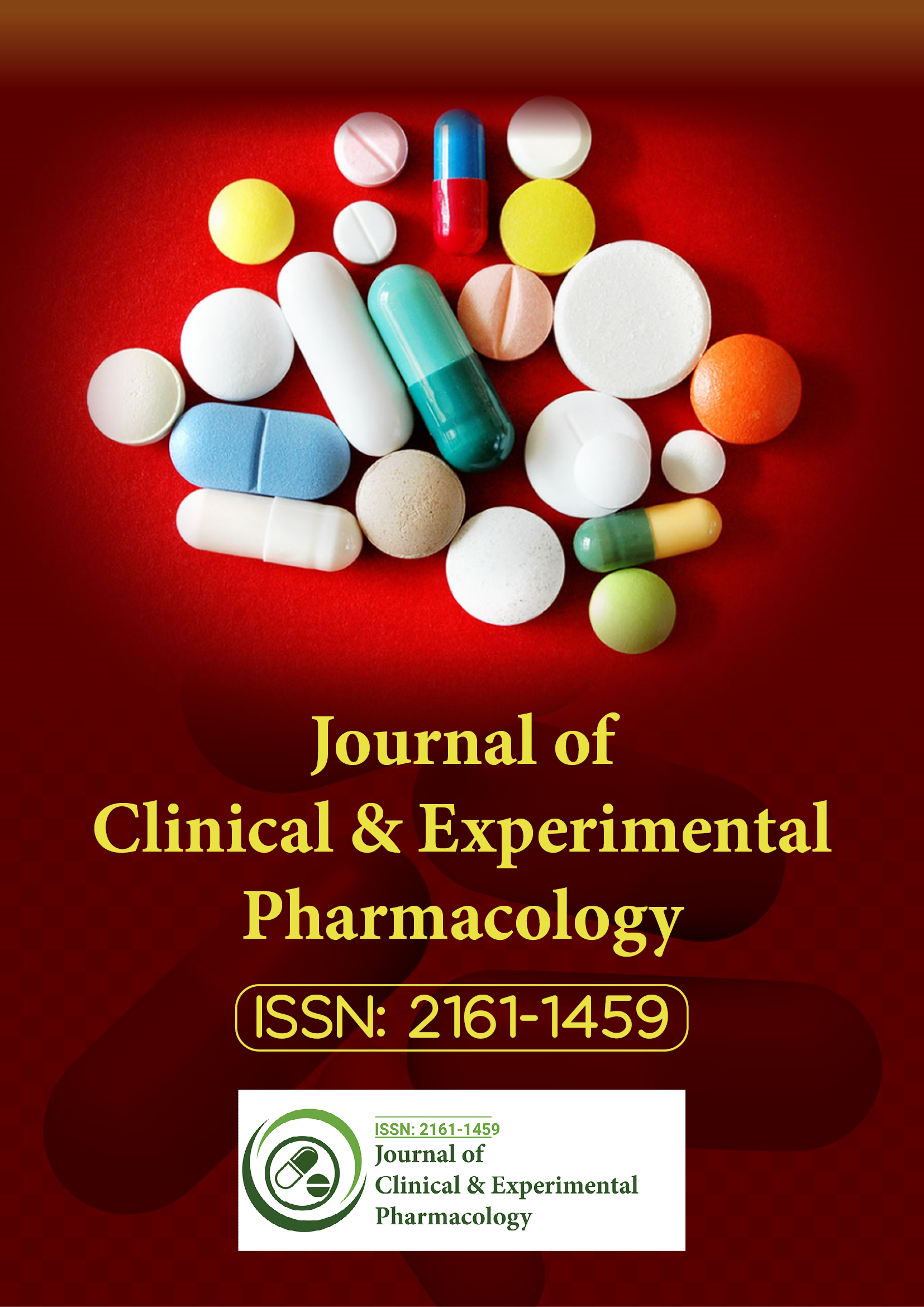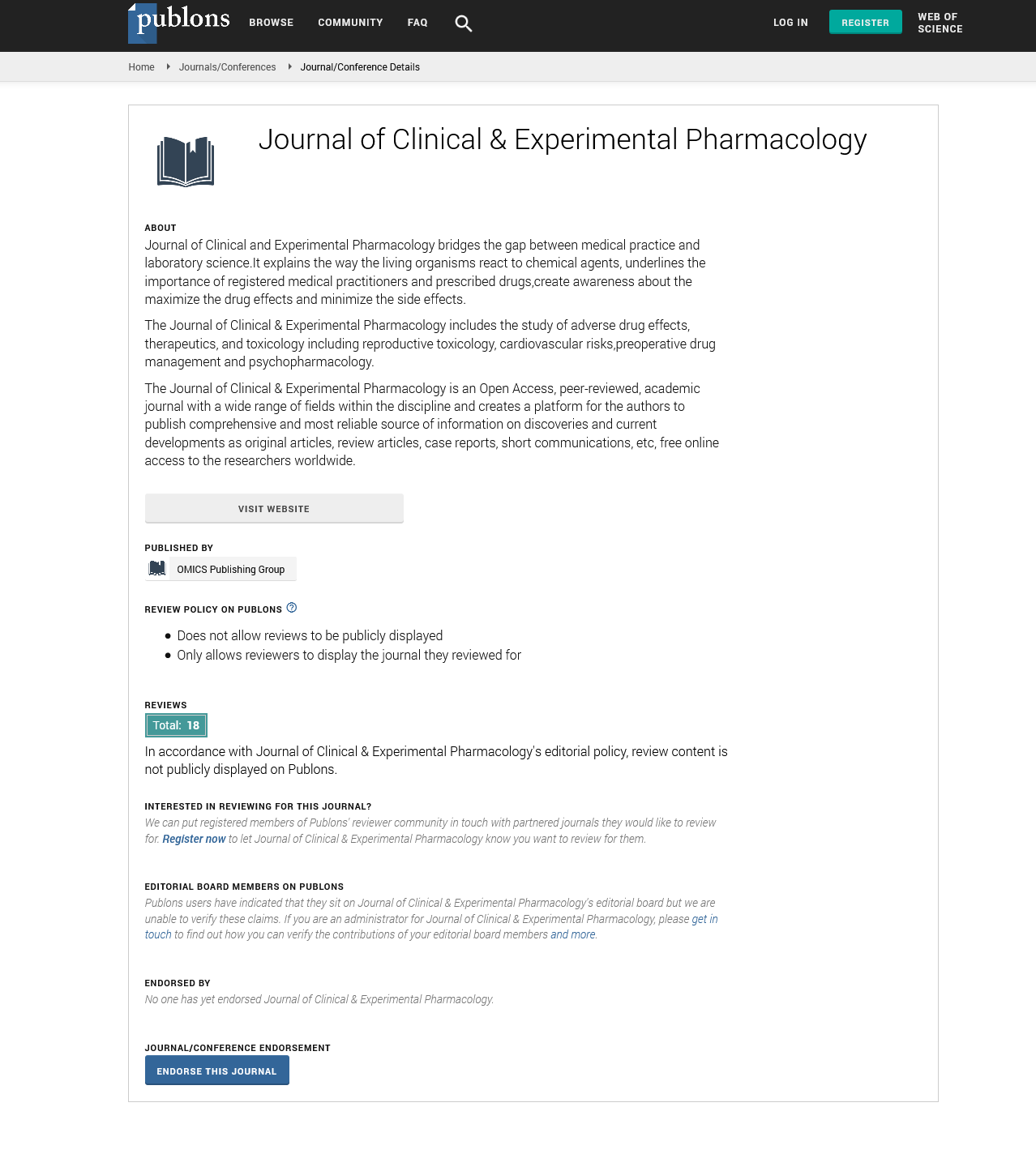Indexed In
- Open J Gate
- Genamics JournalSeek
- China National Knowledge Infrastructure (CNKI)
- Ulrich's Periodicals Directory
- RefSeek
- Hamdard University
- EBSCO A-Z
- OCLC- WorldCat
- Publons
- Google Scholar
Useful Links
Share This Page
Journal Flyer

Open Access Journals
- Agri and Aquaculture
- Biochemistry
- Bioinformatics & Systems Biology
- Business & Management
- Chemistry
- Clinical Sciences
- Engineering
- Food & Nutrition
- General Science
- Genetics & Molecular Biology
- Immunology & Microbiology
- Medical Sciences
- Neuroscience & Psychology
- Nursing & Health Care
- Pharmaceutical Sciences
Commentary - (2025) Volume 15, Issue 3
Recent Advances in Targeted Drug Delivery Systems in Clinical Pharmacology Research
Johnny Becker*Received: 06-Jun-2025, Manuscript No. CPECR-25-29364; Editor assigned: 09-Jun-2025, Pre QC No. CPECR-25-29364 (PQ); Reviewed: 23-Jun-2025, QC No. CPECR-25-29364; Revised: 30-Jun-2025, Manuscript No. CPECR-25-29364 (R); Published: 07-Jul-2025, DOI: 10.35248/2161-1459.25.15.480
Description
Targeted drug delivery systems have emerged as a transformative approach in clinical pharmacology, addressing limitations associated with conventional drug administration methods. Traditional drug delivery often results in widespread distribution of therapeutic agents throughout the body, leading to nonspecific effects, suboptimal drug concentrations at the site of action and systemic toxicity. Targeted systems aim to overcome these challenges by directing drugs specifically to diseased tissues or cells, thereby improving therapeutic efficacy while minimizing off-target effects.
Recent research in this area has focused on both passive and active targeting strategies. Passive targeting takes advantage of physiological differences between normal and diseased tissues. One notable example is the Enhanced Permeability and Retention (EPR) effect observed in tumor tissues, where leaky vasculature permits nanoparticles to accumulate selectively. This phenomenon has been exploited for the delivery of chemotherapeutic agents encapsulated in liposomes or polymeric micelles, with several formulations reaching clinical trials or approval.
Active targeting involves the use of ligands such as antibodies, peptides, or small molecules that bind specifically to receptors overexpressed on the surface of diseased cells. These ligands are attached to the surface of drug carriers to enhance uptake by target cells. For instance, folate receptors, which are often upregulated in certain cancers, have been targeted using folate-conjugated nanoparticles. Similarly, transferrin and hyaluronic acid have been used for targeting brain tumors and inflammatory cells, respectively. These innovations have led to the development of drug delivery systems that are not only selective but also capable of overcoming biological barriers like the blood-brain barrier.
Nanotechnology plays a central role in advancing targeted delivery. Nanoparticles can be engineered with precise control over size, shape, surface charge and functionalization, allowing them to circulate longer in the bloodstream and home in on specific tissues. Lipid-based carriers such as liposomes and solid lipid nanoparticles have shown promise in encapsulating both hydrophilic and hydrophobic drugs. Polymeric carriers made from materials like PLGA (Poly Lactic-Co-Glycolic Acid) offer controlled and sustained release properties, further improving drug bioavailability.
In addition to nanoparticles, other systems such as dendrimers, carbon nanotubes and hydrogels are being explored for their potential to deliver drugs in a controlled and targeted manner. Dendrimers, for example, are highly branched polymers with functional groups that can carry multiple drug molecules or targeting moieties. Their nanoscale size and modifiable surface make them suitable for personalized therapy, especially in oncology and infectious disease management.
Recent advances in stimuli-responsive delivery systems have added another layer of specificity. These carriers are designed to release their payload in response to specific internal or external stimuli such as pH, temperature, enzymes, or light. In tumor environments, where the pH is often acidic compared to normal tissue, pH-sensitive carriers can release drugs selectively in the tumor microenvironment. This approach improves drug localization and reduces exposure to healthy tissues.
Targeted delivery is not confined to oncology. In inflammatory diseases such as rheumatoid arthritis or inflammatory bowel disease, drug delivery systems targeting inflamed tissues are under investigation. Systems designed to release anti-inflammatory agents in response to elevated levels of enzymes like matrix metalloproteinases in inflamed tissue have shown promise in preclinical studies. In cardiovascular disease, targeted delivery of anticoagulants or thrombolytics to sites of vascular injury could reduce systemic bleeding risks.
Despite these promising developments, several challenges remain in translating targeted drug delivery systems from bench to bedside. Manufacturing complexity, stability issues, scale-up processes and regulatory hurdles are significant barriers. Moreover, ensuring consistent targeting in the heterogeneous environment of human disease requires further refinement of targeting ligands and delivery platforms. Clinical trials evaluating the safety, efficacy and pharmacokinetics of these systems are essential before widespread application.
Another area of interest is the use of exosomes and other naturally derived vesicles as drug carriers. These vesicles, produced by cells, possess innate targeting capabilities and are less likely to induce immune reactions. Researchers are exploring ways to load exosomes with therapeutic agents and guide them to specific sites in the body, potentially revolutionizing the field of targeted delivery.
Moreover, advances in imaging technologies and molecular diagnostics are aiding the development of personalized delivery systems. By identifying specific biomarkers expressed in individual patients, treatment regimens can be tailored to include drug carriers equipped with ligands that recognize these biomarkers. This approach is particularly relevant in oncology, where genetic and phenotypic differences among tumors affect treatment outcomes.
In conclusion, targeted drug delivery systems represent a significant advancement in clinical pharmacology research. By enhancing the precision and efficiency of drug administration, these systems offer the potential to improve treatment outcomes across a wide range of diseases. The integration of nanotechnology, molecular targeting and controlled release mechanisms has yielded promising platforms for preclinical and clinical development. Continued innovation in carrier design, stimulus sensitivity and personalization will be key to overcoming current limitations and achieving broader clinical application. As the field evolves, these strategies hold the promise of transforming the landscape of pharmacotherapy, making treatments safer, more effective and more patient-centered.
Citation: Becker J (2025). Recent Advances in Targeted Drug Delivery Systems in Clinical Pharmacology Research. J Clin Exp Pharmacol. 15:480.
Copyright: © 2025 Becker J. This is an open-access article distributed under the terms of the Creative Commons Attribution License, which permits unrestricted use, distribution and reproduction in any medium, provided the original author and source are credited.

